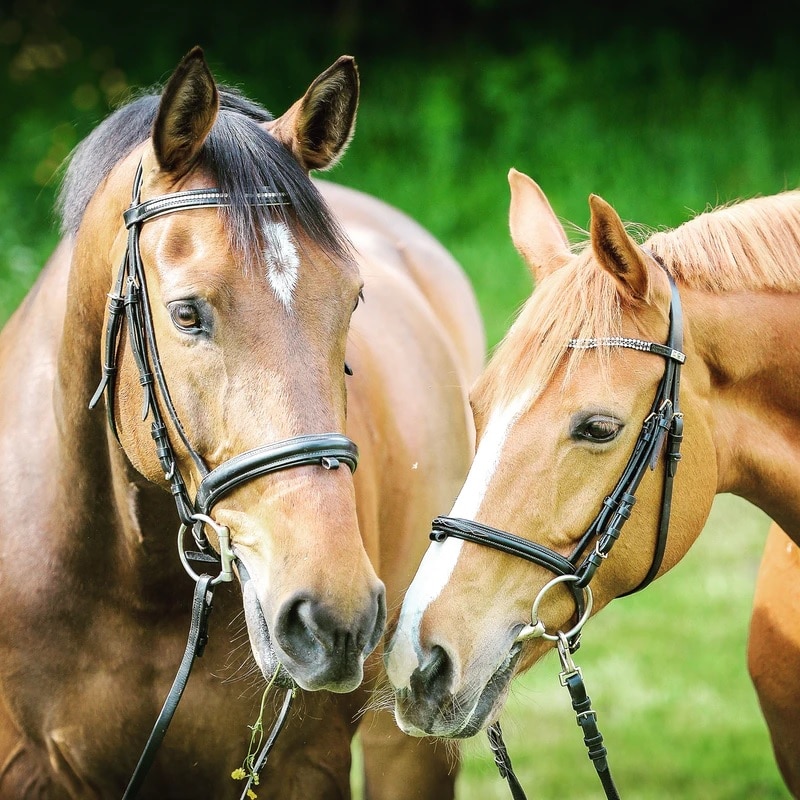How to manage the horse’s diet at home?
Plan the feeding of your horse at home
If you want to keep your horse at home on your property, there are certain precautions you need to take to manage his feed. First of all, you will need to provide a shelter to store the horse feed (forage, pellets, flakes). Ideally, the shelter will be closed to avoid humidity, excessive heat, or rodents. Depending on the storage space available, opt for bales of hay (larger or smaller) or bales, which are easier to handle and distribute. Discover our tips for managing the storage and distribution of horse feed !
You will also need a watering place (pond, river,…) or a drinking trough if you have a water supply, otherwise a container big enough to provide for your horse’s daily water intake (between 20 and 40 litres/day). The water must be renewed regularly to remain drinkable. Beware of freezing in winter, you should make sure that there is no ice in the trough, and if necessary break it. If you have the possibility to warm up the water a little, it would be ideal because a horse that drinks water that is too cold risks colic.
Calculating the horse’s ration at home
If your horse has a lot of grass, it will already have a good part of its feed available, which you can supplement with hay (5 to 10 kilos / day for a 500 kilos horse). If your horse is active on a regular basis, it will need a feed that meets its energy needs, such as pellets or flakes for horses. These horse feeds contain cereals and proteins that allow the horse to exercise or complement a medium or poor quality forage. To compose the ration, it is best to know the weight of the horse. How to weigh your horse without going to a veterinary clinic? There is a formula often used, which takes into account the height of the withers (H) and the perimeter of the rib cage (P) of the horse. The formula is as follows:
Calculation of the weight of a horse: (4.3 x P) + (3 x H) – 785 = weight of the horse
Once you know your horse’s weight, you can start calculating his ration. You will also have to take into account his physiology (like the breed, some horses/ponies need a more restricted diet than others, his age, his body condition), his degree of activity (light, moderate, intense), the quality of the grass of the pasture and the weather conditions. The ration must therefore be calculated on a case-by-case basis for each horse.
Choosing a horse’s diet at home
Once you have chosen your feed, you will have to choose your concentrated feed. Pellets or flakes? The difference between these two feeds lies mainly in the way they are prepared. In pellets, the ingredients are mixed, ground and pressed. In flakes, some ingredients, such as cereals, remain whole. Flaked feed has a slightly longer ingestion time, which encourages salivation. They can also be more palatable to your horse because of the molasses coating that is often added to them. It has also been observed that flaking improves starch digestibility. However, the composition and nutritional value of both feeds are generally similar.
This whole process: weight assessment and choice of feed, is facilitated by the free Royal Horse application.



